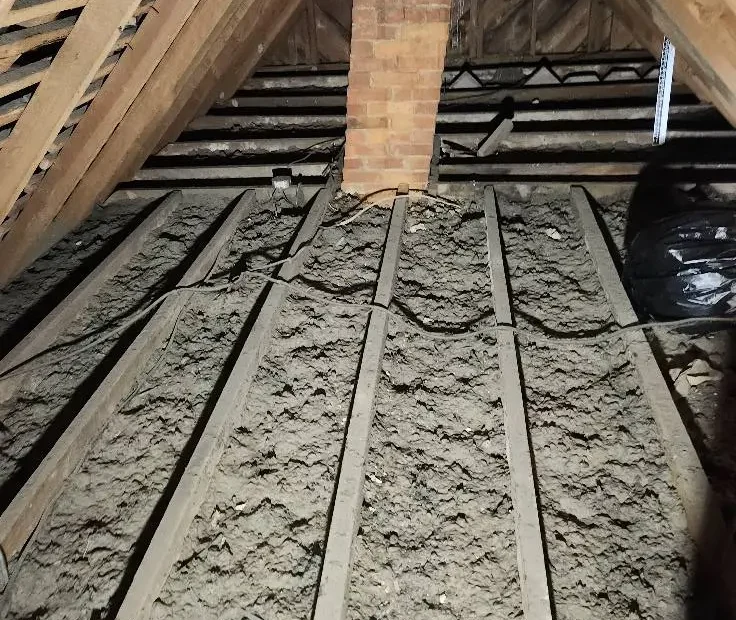Investing in attic insulation can lead to significant energy savings and improved comfort in your home. However, making a decision requires an understanding of various factors. This blog will guide you through the crucial aspects to help you determine whether it’s a worthy investment for you.
Understand the Benefits of Attic Insulation
Explore how attic insulation helps in energy conservation, regulates indoor temperatures, and enhances overall comfort levels in your home.
The primary advantage of attic insulation is its ability to significantly reduce heating and cooling costs. When properly installed, it acts as a barrier to heat, preventing it from escaping during winter and keeping your home cool during summer months. This means less reliance on heating and air conditioning systems, which translates to lower utility bills.
Additionally, attic insulation improves air quality within your home. It helps to prevent drafts and minimizes the infiltration of outdoor air pollutants. This becomes particularly relevant for homeowners who suffer from allergies or respiratory issues. By maintaining a stable and comfortable indoor environment, attic insulation contributes to a healthier living space.
Moreover, installing attic insulation can enhance the overall value of your property. Energy-efficient homes are increasingly appealing to buyers. When the time comes to sell your house, having adequate insulation can make a significant difference in attracting potential buyers.
Evaluate the Costs Involved
Outline the various costs associated with installing attic insulation, including materials, labor, and potential long-term savings.
When considering the investment in attic insulation, it’s essential to evaluate various costs. The price of materials can vary considerably based on the type of insulation chosen—fiberglass, cellulose, and spray foam are popular options, each with distinct benefits and drawbacks. Installing insulation typically ranges from (1 to )3 per square foot, depending on the material and the complexity of the job.
Labor costs add another layer to the total investment. Hiring professionals for the installation will incur additional charges, but it often guarantees superior quality and compliance with building codes. On average, labor can account for 30-50% of the total cost, emphasizing the importance of selecting a reputable contractor.
Consider also the long-term savings associated with installing attic insulation. While the upfront costs may seem daunting, many homeowners see a return on investment within a few years through reduced energy bills. In some cases, government incentives and rebates can further offset initial costs, making insulation an even more attractive option.
Assess Your Current Insulation Status
Determine the current state of your attic insulation to see if an upgrade is necessary and how it stacks against recommended R-values.
Before making any decisions regarding attic insulation, assess your current insulation status. This involves a thorough inspection of your attic space, checking for existing materials, their condition, and whether they meet recommended R-values for your climate zone. In general, homes should have an R-value between R-30 to R-60 in their attics, which can vary based on regional climate.
If you find that your insulation is inadequate, you may face higher heating and cooling costs than necessary. Furthermore, old or damaged insulation may harbor issues like mold, pests, or moisture accumulation, which can lead to larger problems if not addressed promptly.
Taking the time to understand what you’re working with will not only help you gauge whether insulation is worthwhile but will also inform your choices regarding the type and thickness of insulation you may need to install.
Consider Your Climate Zone
Understand how different climate conditions dictate the effectiveness and necessity of attic insulation in reducing energy costs in various regions.
Your climate zone plays a significant role in determining the effectiveness of attic insulation. For example, homes in colder climates can significantly benefit from higher insulation levels, as it helps retain heat during harsh winters. Conversely, properties situated in warmer regions require insulation to reflect heat, thus keeping homes cooler without excessive air conditioning.
It’s crucial to choose insulation materials with appropriate R-value ratings suited for your specific climate. Failing to do so could negate the energy-saving benefits of attic insulation, ultimately resulting in higher energy costs rather than savings. Understanding your climate will also aid in selecting the right materials that perform best for your geographical needs.
In short, attics in areas with die-marked seasonal variations will benefit more from top-notch insulation than those in consistent climates. This reinforces the need to carefully consider not just the costs and benefits, but also the prevailing weather pattern.
Seek Professional Advice
Consulting a professional can provide insights into whether your home will benefit from additional attic insulation and the best products for your needs.
Navigating the world of attic insulation can be overwhelming, which is why seeking professional advice is often the best course of action. Experts in this field can evaluate your home’s specific requirements, helping you understand if you need to invest in new insulation, and recommend the most appropriate products based on factors like your budget and climate.
Moreover, professionals can conduct a comprehensive energy audit, identifying areas where improvements can be made not only in insulation but across your entire home. With their insights, you can create a customized insulation plan that maximizes energy efficiency and comfort levels.
Ultimately, having an expert evaluate your situation ensures that you make a well-informed investment that pays off in the long run.
Final Thoughts on Attic Insulation Investment
Ultimately, the decision to invest in attic insulation should be based on your individual circumstances, including your home’s current insulation status, your climate, and your energy costs. By weighing the benefits against the costs, you can make an informed choice.

